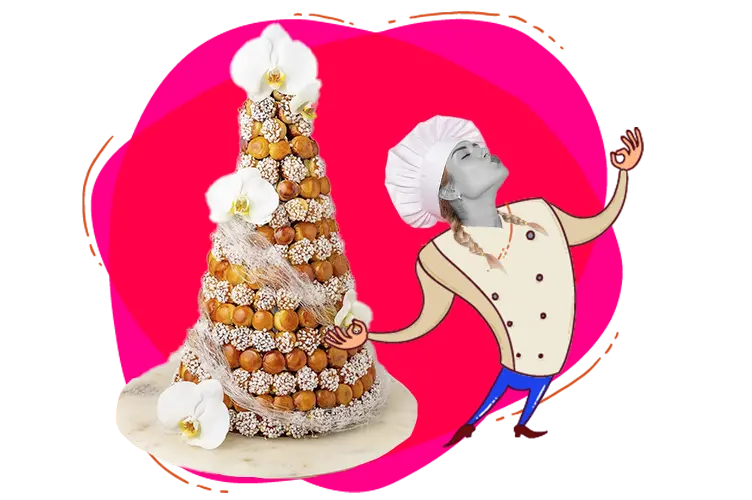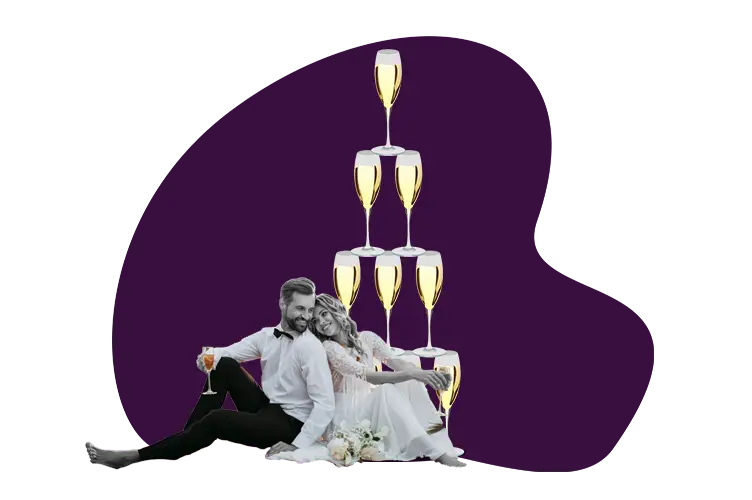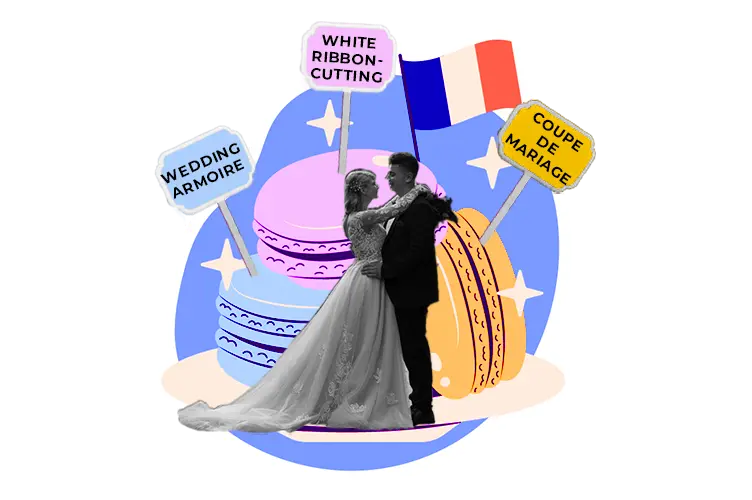
Whether you’re wanting to plan a destination wedding in France or you’re simply curious about French wedding traditions, it doesn’t matter! We have a whole list of some of our favorite French wedding traditions that you should know about. If you’re in the wedding planning process, this will definitely inspire you to go outside the normal American traditions and admire the French culture even more.
French weddings typically consist of two ceremonies over the course of two days: a civil ceremony and a symbolic service.
A civil wedding is a legal requirement in France. Couples wanting to legally marry in the country must be at a town hall in no less than 10 days and no more than a year after the authorization to marry has been granted. The mayor or another representative officiates the ceremony and the doors to the town hall must remain open to reflect the ‘public’ nature of the event and provide people with the option to potentially object to the marriage. This ceremony will be done in French and a translator can be present if either you or your spouse-to-be are not fluent in the language.
The real wedding is often held a day after the civil ceremony and is usually celebrated with only close family and guests. It can be held anywhere, although it is usually held in a church, a quaint chateau, or a resort.
After all the guests are seated, the groom and his mother are the first to walk down the aisle. The bridal party arrives next, consisting of the flower girls scattering petals and the boys carrying the ring. Like American wedding receptions, the bride and her father are the last to go down the aisle. The best part is that the French couple can then sit on red velvet chairs for the exchange of vows and after the ceremony, the guests exit the wedding venue while the witnesses and newlyweds sign the registers. The newly married couple will then leave the venue where people will throw rice, confetti, or flower petals as they make their exit.

La voiture balai directly translates as the ‘broom car’. It serves the purpose of following the bridal and guests’ cars between locations, to ensure everyone reaches the party safely. It’s often a cute and unmistakably French vehicle–such as the Citroen 2CV–that is there to follow the bridal party and the quests to ensure everyone reaches the party safely. This broom car can also be customized into scooters or horse carriages, depending on the couple’s preference.
Invitations to the wedding reception dinner are given only to a select few guests, usually only really close family members and friends where things like the below are served.

At a traditional French wedding, you won’t see the customary tiered wedding cakes like you would in America. Instead, you’ll encounter what they call the croquembouche, which is made up of balls or choux buns filled with vanilla cream or custard and held together with toffee. Alternative offerings may be chosen like macarons or other French pastries, but croquembouche is the typical favorite.
Dragées are candy-coated or chocolate-coated almonds that are a popular sweet at French weddings. Traditionally, each guest receives five pieces to symbolize the fertility, happiness, health, longevity, and wealth of the newly married couple.

As one might assume, champagne is flowing at French weddings, which means la fontaina à Champagne (a pyramid of flutes or coupes overflowing with champagne) is an absolute must. However, it is highly recommended to entrust the construction of such a tower to capable and experienced professionals.
In many countries, wedding celebrations usually end around midnight (at the latest). For the French, parties can (and will) go all night up to early in the morning. Guests are usually invited to eat a late breakfast or lunch the next day, turning it into an even longer affair.

Translated “the wedding cup,” in English, it is exactly what it sounds like. An engraved, two-handled cup that is passed down to the newlyweds. Meaning, instead of toasting with regular champagne glasses on their wedding day the new couple will use their personalized la coupe de mariage to celebrate life as a married couple.
A traditional French bride’s ‘wedding armoire’ is her cupboard or chest. This specific chest is to be filled with linen or clothing or to use the native term, ‘trousse.’ These pieces of clothing are often hand chosen and embroidered by the bride and her mother with her married initials and are meant to serve the bride’s needs during her married life.
A custom in smaller French villages is white ribbon cutting. This is where the groom approaches his bride-to-be at her home to ‘collect’ her before the ceremony. As the bride, her father, and musicians lead the procession, children stretch white ribbons across the road to block her path. The bride will cut the ribbons to allow her passage, thereby also symbolizing her ability to pass through the obstacles of married life. In modern times, the ritual has evolved into the couple passing through a white sheet cut in the shape of a heart.
Nope, no bridesmaids (or best man for that matter). Funny enough, the French don’t even have a word for them. The bride and groom can have one or two witnesses each for the ceremony as
their wedding party, but unlike American and British weddings, French wedding traditions don’t require bridesmaids and groomsmen.
Wedding registries aren’t common in France, since French couples feel uncomfortable asking for specific items. Instead, guests usually give cash as a gift which can range in pricing.
Traditionally, it was the parents of the bride who pay for the wedding. However, this isn’t the case in more modern times. If parents are paying for the wedding, they may divide the cost per guest, and pay for the guests of their family.
Typically, they’ll start the wedding ceremony starts in the afternoon, around 6 p.m. However there will likely be events before and after, and depending on what you’re invited to will change the time you need to show up.
French weddings are traditionally less gendered and there is way less focus placed on the bride-to-be and more on the two families coming together. It is also very important that the engagement is kept secret from friends until the couple can tell their families in person.
With all that said, there are many unique and widely celebrated French wedding traditions that stem from their culture. Some are similar to American wedding traditions, however, that je ne sais quoi of some French traditions cannot be duplicated. If you’re looking for more wedding traditions from other countries or advice on planning a wedding overseas you can browse our site The Groom Club.